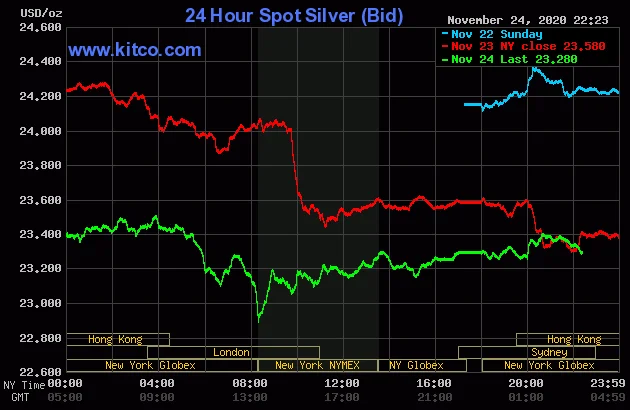Gold is kissing $4,000 an ounce. Silver is on a tear that makes a crypto bro blush, up over 127% since the world really started going to hell two years ago. And all anyone in the financial media wants to talk about is technical charts and price targets.
Let me be clear: This isn't a "bull market." It's a global scream for help, translated into the only language the markets understand. We're marking the second anniversary of the October 7th attacks, Russia and the EU are playing chicken with frozen assets, the US government can't even keep the lights on, and France is one bad election away from imploding. And what's the headline? Goldman Sachs thinks gold might hit $5,000.
Give me a break. That’s like watching a house burn down and commenting on how brightly the flames are glowing.
The metals aren't the story. They’re the fever. They're the big, flashing, neon-red warning sign that the entire system we've built is groaning under the weight of its own incompetence and instability. But are we listening to the warning? Offcourse not. We’re just gambling on the thermometer.
The Billionaire's "Concern" is Your Cue
You know things are getting weird when the people who rig the game start getting nervous about how it’s being played. Bloomberg ran a headline: "Citadel's [Ken] Griffin Calls Rush to Gold as Safer Asset 'Concerning'."
Concerning. Let that sink in. A man who runs a $62 billion hedge fund—a machine designed to extract wealth from market volatility with the precision of a laser-guided missile—is suddenly worried that you, the little guy, are trying to find a safe harbor. My cynical translation? He’s concerned that the peasants are getting a little too close to figuring out the escape route from the serfdom of fiat currency. He’s not worried for you; he’s worried about you.
What is so "concerning" about people trying to preserve their wealth when their leaders are lighting dumpster fires on a global scale? We have the President of the United States being sued by Chicago to block the use of the National Guard, a move that feels ripped from a bad political thriller. We have a US government shutdown with no end in sight because our elected officials would rather posture on cable news than do their jobs. And we have Hamas and Israel locked in a death spiral while the US proposes a "peace plan" that seems designed to fail.

So, when an analyst from StoneX says "new cohorts of investors [are] looking for hedges against uncertainty and political difficulties," it's the understatement of the century. It’s not a "cohort." It’s anyone with a functioning brain and an internet connection. The real question is, why did it take this long? Were we all just asleep at the wheel?
It's Not a Rally, It's a Panic Attack
The thing that drives me crazy is how Wall Street packages this systemic rot as just another market trend. Goldman Sachs jacks up its 2026 forecast to nearly $5,000. Why? Because of "sticky" ETF inflows and central bank buying. This is a bad take. No, 'bad' doesn't cover it—this is a fundamentally dishonest analysis.
They’re treating the symptom as the cause. People aren't buying gold because Goldman has a high price target; Goldman has a high price target because people are terrified and are buying gold. It's a feedback loop of fear.
And then you get the "smart" money take. Metals strategist Nicky Shiels at MKS Pamp points out that gold is an "overcrowded trade that's overextended by every technical metric." She’s not wrong, technically. From a pure chart-gazing perspective, it’s probably due for a pullback. But this isn't a technical market anymore. This is a psychological one. Trying to apply technical analysis to a market driven by raw, primal fear is like trying to use a tide chart to predict a tsunami. The old rules don't apply when the ground itself is shaking.
The central banks are the perfect metaphor for this whole mess. The People's Bank of China keeps buying gold, month after month. But as Shiels points out, these massive state-level holders are now so overweight in gold that they have to start "actively risk managing" their exposure. Think about that. The ultimate "safe haven" asset has become so valuable, so central to their strategy, that it's now a risk in itself. It’s like hoarding so many life rafts on your sinking ship that the weight of the life rafts starts sinking you faster.
And where does this all lead? I mean, really. Are we all supposed to just sit here, watching the price of a shiny rock go up, and pretend that this is a sign of a healthy economy? It just feels like...
So, Who's Getting Left Holding the Bag?
Let's be brutally honest. The screaming you hear isn't coming from a ticker symbol. It's coming from the slow-motion collapse of confidence in every institution that's supposed to hold our world together—governments, central banks, international law. Gold and silver aren't assets anymore; they're protest votes. They're a vote of no confidence in the entire damn system. The question isn't whether gold will hit $5,000. The question is what the world looks like when it does. And I promise you, you won't be celebrating the profits from your portfolio. You'll be too busy worrying about everything else.
